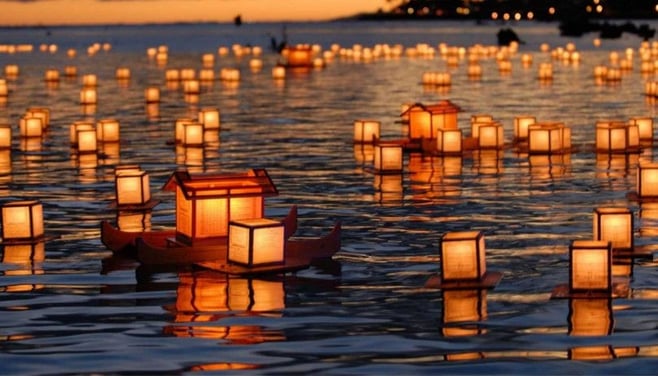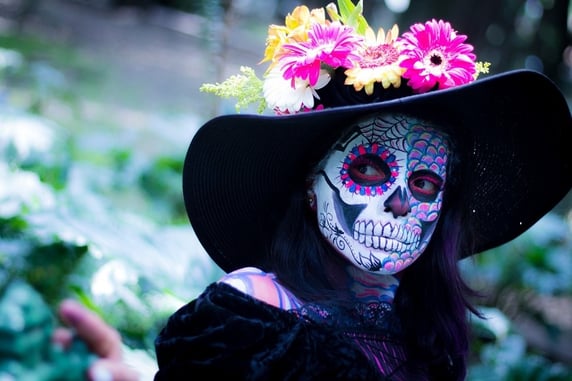It’s that time of the year again when witches, ghouls, black cats, and goblins come to roam the streets in search of sweets. Where did this candy-filled, spooky time of the year come from though? Its origins are in the Celtic festival of Samhain, where people dressed up in costume would light bonfires and try to ward off ghosts. Over time Halloween evolved into what it is today, however festivities celebrating this time of the year differ from country to country. Join us as we take a tour of Halloween around the world!
Stay Tuned for some Classroom Ideas at the End!
Ireland
This list could not start without Ireland, as it is the originator of Halloween, or Samhain. A pagan, Autumn festival signalling when crops would have to be stored up for the winter, but also a time when the souls of the dead would return to the earth. Today however, Halloween in Ireland shares much of the same traditions as Halloween in North America. People wear fun costumes and go trick-or-treating, but they also keep the tradition of lighting bonfires as they did when Samhain started. A fun tidbit you might not know, is that Jack-O-Lanterns, which are so symbolic of Halloween as we know it today, actually started off with turnips instead of pumpkins, since pumpkins are not native to Ireland.
Mexico
In Mexico, Halloween, or Hallows Eve, is part of the larger ‘‘Dia de los Muertos’’ festivities, which has its roots in Catholicism. Hallows Eve is the evening before ‘‘All Saints Day’’ where important catholic saints and martyrs are celebrated, and the next day is ‘‘All Souls day’’ where people celebrate the lives of lost friends and family members. It’s during this time when the souls of the dead come to visit the world of the living. It’s quite a beautiful sight to see as people dress in beautiful colors with skulls and flowers. They light candles and decorate their houses with flowers, candles, and food in honour of their dead visitors. While ‘‘All Saints Day’’ and ‘‘All Souls Day’’ are observed across many countries with catholic roots, Mexico’s celebration is the one that stands out the most for its joyous, colourful, and unique flare.
Japan
In the last decade, Japan has come to celebrate Halloween on October 31st, full of large crowds of people in elaborate costumes, similar to what you would see in North America. However, there is a more traditional Japanese festival that is quite beautiful, which shares a celebration of the dead similar to that of Mexico. This is called the Obon festival, and it takes place between the 13th - 15th of August for those who follow the lunar calendar. It is a holiday commemorating the spirits of dead ancestors, where paper lanterns are hung up to guide spirits into the after life. Its origins are part of a Buddhist festival, based on a story where a Buddhist disciple helped the spirit of his mother out of the Realm of Hungry Ghosts. He danced with joy once she was released, and today dance is still an integral part of the festival.
 Source: https://www.jrailpass.com/blog/obon-festival-2018-in-japan
Source: https://www.jrailpass.com/blog/obon-festival-2018-in-japan
Autumn and Halloween
The more commercialized North American version of Halloween has become quite popular world-wide, as there’s something to be said for getting dressed up, eating sweets, and celebrating the joy of getting spooked. It is interesting to see though, how with Autumn comes a lot of celebrations very similar in nature that celebrate the changing of seasons, harvest time, and spirits. What better way to teach students about the world, than through one of their favourite holidays?
Halloween in the Classroom
There are many classroom activities that can appeal to those students who love Halloween. Start a classroom discussion on Halloween; what do students know about its history? What’s their favourite part about it?
Next, ask them what their dream travel destination is, and to research how Halloween is celebrated there. They can then give a presentation on their findings, in the target language if applicable. Encourage students to be creative, and to bring props, such as decorations and treats in order to make their presentation more hands on and engaging for the other students in the class, who should be taking notes.
After hearing everyone’s presentation, students can then compare and contrast the different ways of celebrating in each country. Students can get into groups and create a large Venn diagram on their choice of three different countries and the different traditions relating to Halloween in each, thus creating a visual representation. (Instruct them before class to bring materials such as a bristle board, markers, pictures, etc.)
The Venn diagrams can be hung up throughout the classroom, and can also serve as visual help for the students when writing a compare and contrast essay.





